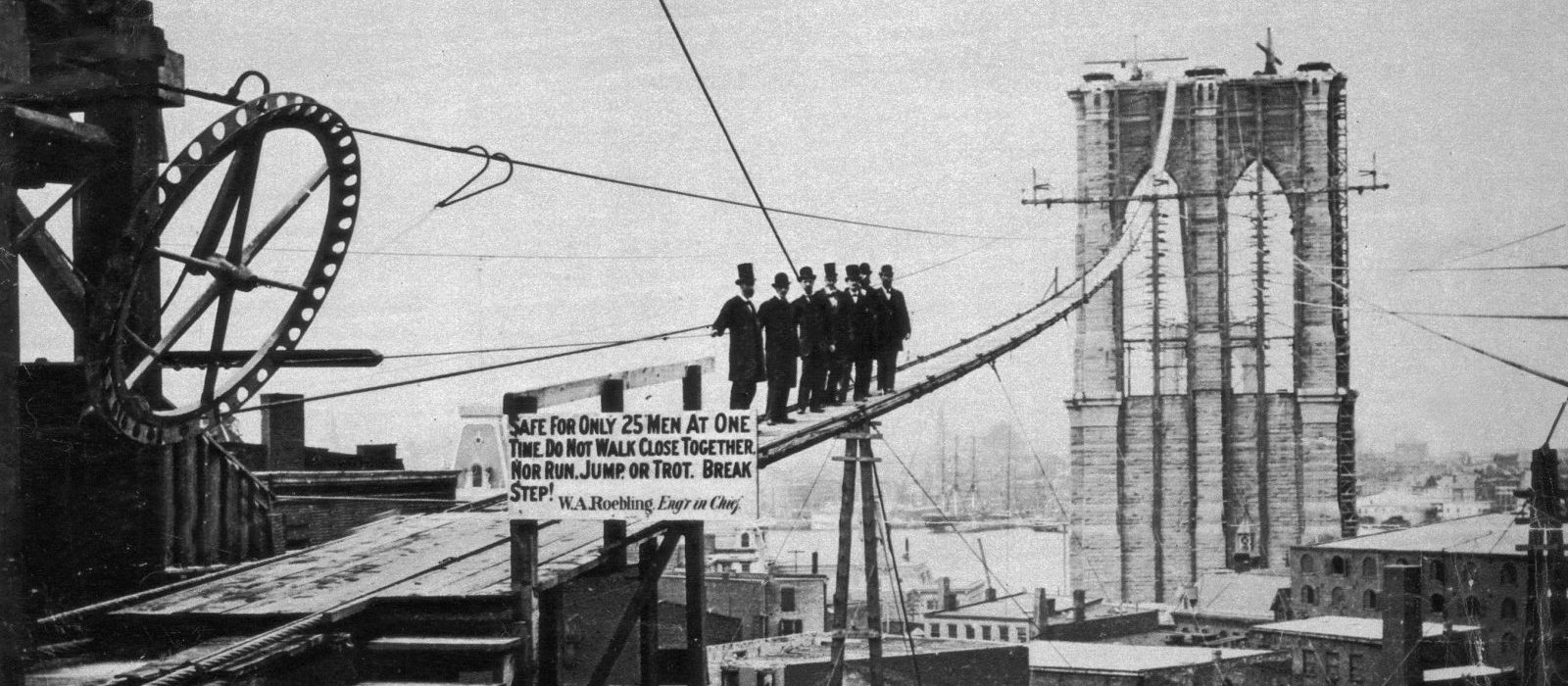On May 24th, 1883, the world witnessed the grand opening of a marvel of 19th-century engineering – the Brooklyn Bridge. Spanning the majestic East River and connecting the boroughs of Brooklyn and Manhattan in New York City, this iconic landmark stands as a testament to human ingenuity, perseverance, and the indomitable spirit of innovation. Designed by the visionary civil engineer John Augustus Roebling, the Brooklyn Bridge remains an enduring symbol of progress and unity, transcending generations and inspiring awe in all who behold its majestic beauty.
The Visionary: John Augustus Roebling
The story of the Brooklyn Bridge begins with its brilliant architect and chief engineer, John Augustus Roebling. Born in Prussia in 1806, Roebling immigrated to the United States in search of opportunity and freedom. A visionary thinker and gifted engineer, Roebling quickly established himself as a pioneer in the field of suspension bridge design, with a particular fascination for the potential of steel cables to support massive loads over long spans.
Roebling’s dream of spanning the East River with a grand suspension bridge was born out of a desire to unite the burgeoning metropolis of New York City with the rapidly growing borough of Brooklyn. His vision was ambitious, audacious, and, to many, seemingly impossible – but Roebling was undeterred. With meticulous planning, innovative design, and unwavering determination, he set out to make his dream a reality.
The Construction: A Monumental Undertaking
Construction of the Brooklyn Bridge began in 1869, with Roebling at the helm of the ambitious project. The scale and scope of the endeavor were staggering – spanning over 1,595 feet and standing 276 feet above the water, the Brooklyn Bridge was set to be the longest suspension bridge in the world at the time of its completion.
Roebling’s innovative design called for a system of massive stone towers, steel cables, and suspension cables to support the weight of the bridge and its traffic. The construction process was arduous and dangerous, with workers laboring tirelessly in treacherous conditions high above the swirling currents of the East River.
Tragically, Roebling himself would never see his masterpiece completed. In 1869, he suffered a debilitating injury on-site and passed away shortly thereafter. But his son, Washington Roebling, would carry on his father’s legacy, overseeing the construction of the bridge with skill and determination.
The Completion: A Triumph of Engineering
On May 24th, 1883, after 14 years of tireless labor and countless challenges, the Brooklyn Bridge was officially opened to the public with great fanfare and celebration. Thousands of spectators gathered to witness the inaugural crossing, marveling at the engineering marvel before them.
The completion of the Brooklyn Bridge marked a defining moment in the history of New York City and the United States as a whole. It not only revolutionized transportation and commerce in the region but also served as a potent symbol of progress, innovation, and the power of human ambition to overcome seemingly insurmountable obstacles.
The Legacy: An Enduring Symbol of Unity
Today, over a century after its completion, the Brooklyn Bridge remains an enduring symbol of unity and connection, linking the boroughs of Brooklyn and Manhattan in a tangible expression of solidarity and mutual dependence. Its graceful arches and soaring towers continue to inspire awe and admiration, drawing millions of visitors from around the world to walk its storied span and marvel at its beauty.
But perhaps the true legacy of the Brooklyn Bridge lies not in its physical structure, but in the spirit of cooperation, collaboration, and shared vision that it embodies. In an increasingly divided world, the Brooklyn Bridge stands as a reminder of the power of bridges – both literal and metaphorical – to bring people together, transcend boundaries, and forge bonds of friendship and understanding that endure across generations.
As we celebrate the anniversary of its opening on this day, let us pay tribute to the visionaries, engineers, and laborers who made the Brooklyn Bridge a reality. And let us draw inspiration from their example as we strive to build bridges of our own – bridges of understanding, compassion, and unity – in the world around us.












Jennifer
Lived in the city for half my life. Always struck by the beauty and convenience. It’s a marvel